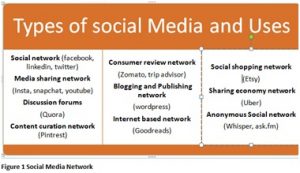By: Anmol Sharma
In these times of crisis, a strong commitment to the well-being of stakeholders is of utmost importance. Companies around the world are currently facing sharp drops in demands that puts job at risks, threatens the income of suppliers and local communities in which we erode the confidence of providers finance to firms. Therefore welcome that companies around the world are stepping up their social responsibilities activities examples are Unilever a British dutch conglomerate that donated soaps, sanitizer, bleach, and food. German chemical company BASF gave away over 100 million masks and supplied health care facilities with hand sanitizers for free of charge. Microsoft grants its worked 12 weeks of paid parental leave because of school disruption. Another example could be of Danone, they announced to guarantee all employment contracts and wages onto the summer to extend childcare and health care programs and to put in place a 300 million euro find to support fragile suppliers.
Learn more about Corporate Law with Enhelion’s Online Law firm certified Diploma course certified by Scriboard Advocates and Legal Consultants!
Likewise in India Ratan Tata had donated INR 1500 Crores to the government, being the biggest industrialist he donated such big amount of money in this pandemics and he even stated that if the country needs more help I might sell my company or everything I had earned till yet for the country, some of the bug donations had been done by Actor Akshay Kumar who donated an amount of Rs. 35 Crores to the government of India. Reliance industries donated INR 500 Crores to the PM cares meant for Covid crisis. SCR money can be helpful in ongoing pandemic situation of Covid-19, to run community kitchens, provide shelters to homeless and stranded migrants labourer example: to support to civil society responding to food relief. It can prevent deterioration in gains made in Area of child rights, girl rights for example: lots of children may be pushed into child labour, malnutrition may rise, under age marriage of girls given more poverty.
CSR is not philanthropy, Rather responsibility towards society. A way to achieve balance of Economic, Social and Environmental imperatives. As per Companies act 2013, 2% of profit should go for certain CSR related activities such as Environmental protection, Girl education, Nahi Kali(Mahindra).
CSR (Corporate social responsibility) comes in 2007 in India & in USA it truly began in 1971. In India company act it is mandatory provision under section 135 of company act 2013, which came into effect from 01.04.2014 on the other hand in USA CSR (Corporate social responsibility) is type of soft law which do not requires a statue or regulation that means hard law but is nonetheless seen as obligatory by most corporations because of consumer expectations and internal norms. Principles of building the legal shell specifically in interpreted rights, duties, and causation, are mainly worldwide embraced. Thus, corporates must have CSR schemes that are “litigation ready” when it requires human rights because the UNGPs would be informed about the content of sensible corporate practices, which had censorious implications for multinational civil and commercial disputes. That is to say, UNGPs (The United Nations Guiding Principles) make multinational tort liability of corporations to 3rd parties.
Learn more about Corporate Law with Enhelion’s Online Law firm certified Diploma course certified by Scriboard Advocates and Legal Consultants!
CSR (Corporate social responsibility) is basically bringing consciousness about society, surroundings, environment and that is where the CSR brings in the stake holder perspective to think about society & have those consideration in the mind of businessmen basically when they are discussing strategy. [1]The capitalists should act as a trustees (not owners) of their property and conduct themselves in a social responsible way. This concept actually measures financial, social & environmental performance of the corporation. [2]The Business Responsibility Reporting (BRR) are mandated for requirement of top 100 (from 500 to now top 1000) lasted entities in their annual report. In todays world 90% of CEOs claims that Sustainability is key to success. Research shows that if you have good CSR programme it will increase employee commitment, customer satisfaction, reduce risk and even get better access to finance. The good example of irresponsibility is Volkswagen case, Volkswagen is known to be the most responsible companies top-rated on different screens and still it turned out that they had tampered with their emission technology and that of course led to major drop in their brand value but its also read to a drop in their share prices of the companies.
Learn more about Corporate Law with Enhelion’s Online Law firm certified Diploma course certified by Scriboard Advocates and Legal Consultants!
Top management of corporate sector is not going to do the Job but they have to endorse the activities on the CSR so the first thing then is to put together a group of company across the company 5 to 10 people from different department and they together are going to find out and discuss what this companies main social impact or the main footprints of the company, a good check list for that is the sustainable development with 5 goals the SDGs of course those 5 goals are relevant for individual companies depends upon which secretary they’re in so first will be MAP lets say companies and the industry of producing clothing in developing countries well probably decent work and economic growth is most relevant or if company is in oil industry then climate action issues is relevant and if the company is in fish farming well then it would be life below water is more important. When the goals are identified a concrete plan with concrete target and how to reach the target must be set up when that is ready we move on to the second step that is TEST take the draft plan presented to key stakeholders ask for their input revise accordingly who are stakeholders like customers, suppliers other employees, non governmental organisation, environmental organisation these are ones to to come with feedback and then revise the plan according to that then we’re ready for the third step which is LAUNCH the launch is about making the rest of the company aware of the plan and let them buy into tithe day-to-day work how do you do that, put it on a company website or newsletter or monitors be creative. The fourth step is the IMPLEMENTATION have you had to follow up the plan, are we reaching the targets are we not why there will be unexpected happenings these are great learning point. Now the last and fifth step that is REPORTING the reporting is like accounting coming forward with what worked or what didn’t work and why, and, be open and be honest and transparent not only focused on what went went well but also the problems the challenges one might think that companies with big CSR report are doing a lot of things are being good companies but actually its not true its the opposite way around companies with the big report writing a lot those are the ones who have been criticised and have to explain that they have changed and convinced the reader the CSR reports are good source of finding out to which extent the CSR work is actually integrated into the company.
Learn more about Corporate Law with Enhelion’s Online Law firm certified Diploma course certified by Scriboard Advocates and Legal Consultants!
Working practices of the corporate company have been totally changed since this pandemic of Covid-19 and turn corporate company to work on different platforms, for example, to work from home is mandatory these days as offices are still closed for time being for the safety of their own. This measure had been taken worldwide whether it’s India or the USA or any other country as this the social responsibility of corporate sectors to make sure that people are safe during these pandemics and they won’t suffer any monetary problems.
The legal department of the corporate sectors is still analyzing and evaluating the effects of this pandemic on contractual relationships of all sorts, as well as the consequences of Covid-19 on contractual relationships of all sorts, also as possible mitigating strategies which will have to be compelled to be implemented. In particular, the performance of contracts that one can reasonably expect to be impacted by the spread of coronavirus (a sizable amount of contracts of all kinds, indeed) would require deep analysis to verify whether or not they include the act of God clauses that would potentially and ultimately excuse performance from any (or both) parties within the event an unforeseen scenario. In this scenario, the legal departments will play a crucial role in this pandemic situation where they had to make a strategy for the corporate sectors so that it favors the corporate sector rather than affecting them. Even the Boards of the company had to come forward with strong leadership as they had several commitments towards their company. We are now seeing great samples of true leadership that goes beyond direct responsibilities within companies to a way larger scale: Leading initiatives that, because of the large power of globalization and therefore the scale of social and professional networks, have a really powerful reach. According to section 135 of the companies act, CSR spend is mandatory for every company beyond a financial threshold, Net worth of INR 500 Crores or Turnover of INR 1000 Crores or Net Profit of INR 5 Crores, required to spend 2 % of average net profit of last 3 years on CSR projects, reports made under clause (0) of sub-section (3) of section 134 specify the reasons for spending the amount. On the other hand in the USA, there are corporate foundations in the companies where spending money on CSR is also mandatory, recently [3]500 firms spend around $20 billion a year on CSR activities.
Section 135 of the companies act, the compliance of constitution of the CSR committee of the board 3 or more directors, at least 1 independent director, CSR committee shall formulate and recommend CSR policy (preference to be given to local), recommend CSR activities and expenditure on the same, monitor CSR policy from time to time, with this the responsibility of The Board as follows –
- Disclose composition of CSR committee.
- Approve CSR policy and report.
- Ensure SCR activities and undertaken by company
- Ensure spending on CSR activities and reporting of non-compliance.
Learn more about Corporate Law with Enhelion’s Online Law firm certified Diploma course certified by Scriboard Advocates and Legal Consultants!
Now, on the other hand, the same business laws are there in the USA where it is mandatory for every company to spend on CSR and The Boards of the companies had to take measurable steps to ensure their responsibilities.
Like we talk about today’s time then one of the most crucial steps taken under CSR in all the companies is that they had to make sure that all the departments including there buildings must be sanitized properly not only in India or USA but this is world-wide like in India it is set up by the central government for the promotion of sanitation, likewise in the whole world including the USA and other countries it is mandatory that to sanitized every building and keep sanitizer bottles or packs for employees so that they can be safe during this pandemic.
On other hand in India work from home is a new format which is not as successful as where employees work as in the office premises but yes during this pandemic this rule has to be followed by every corporate sector same as in the USA this step of work from home has been taken up and been followed up there also for the care of employees.
In India promoting education, including special education and employment vocation skills especially among children, women, elderly, and, the differently ables and livelihood enhancement projects.
On 23.02.2020 in India funds may be spent for various activities related to COVID 19 under item no. (i) and (xii) of Schedule VII relating to the promotion of health care, including preventive health care and sanitation, and, disaster management (including state Disaster Management Fund).
28.03.2020: contribution to PM cares fund shall qualify as CSR expenditure under item (vii) of Schedule VII.
[4]The SALARY of the employees during the lock-down and payment to casual/contractual workers – not CSR, any ex-gratia payment is made to temporary/ casual workers/ daily wage workers over and above the disbursement of wages. Specifically to fight COVID-19, the same shall be admissible towards CSR expenditure as a one-time exception provided there is an explicit declaration to that effect by the Board of the company, which is duly certified by the statutory auditor.
On the other hand in the USA, there are cuts of salaries during lockdown even the former president didn’t do much about it but Newly appointed president Biden said that corporate sectors must pay the salary to there employees in this pandemic situation as it is difficult not only for corporate sectors but people of the country who are working in the corporate sectors are also suffering a lot in this Pandemic situation even the Government is also facing monetary problems in the whole world.
Learn more about Corporate Law with Enhelion’s Online Law firm certified Diploma course certified by Scriboard Advocates and Legal Consultants!
CSR can be good for a company, first it can builds good image, responsible behaviour which gives competitive advantage, can act as a marketing strategy. CSR can be for government by helps government in achieving its social objectives welfarism concept.
BENEFITS TO CSR, Lack of awareness will be resolved, lack of interest of local community in participation of CSR activities will be tackled, an opportunity to build trust and synergy between CSR, NGO and Local bodies. All these will be a precursor in institution of CSR in India as well as in USA.
[1] Gandhis Concept of “Trusteeship”
[2] SEBI has, vide circular dated August 13, 2012
[3] Fortune Global, https://hbr.org/2018/01/stop-talking-about-how-csr-helps-your-bottom-line#:~:text=Today%2C%20Fortune%20Global%20500%20firms,for%20attracting%20and%20motivating%20employees
[4] Schedule VII Companies act COVID NOTIFICATION
Learn more about Corporate Law with Enhelion’s Online Law firm certified Diploma course certified by Scriboard Advocates and Legal Consultants!









